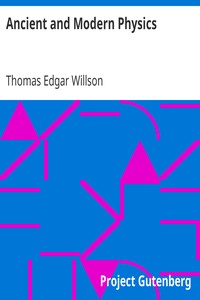| Summary |
"Ancient and Modern Physics" by Thomas E. Willson is a scientific publication likely written in the early 20th century. The work explores the intersection of ancient Eastern metaphysics and modern Western physics, focusing on the fundamental nature of matter and its various planes of existence. The book delves into complex ideas such as the four types of physical matter according to Hindu philosophy—prakriti, ether, prana, and manasa—and how they can be understood through contemporary physical sciences. The opening of the work presents a thoughtful preface paying tribute to the author, Thomas E. Willson, highlighting his dedication to Theosophy and his contributions to understanding the intertwining of science and spirituality. In the first chapter, Willson sets the stage by discussing how the Hindu system of physics shares similarities with Western physics but extends beyond it, illustrating concepts of matter organized in 'planes' based on vibration frequencies. He outlines the foundational principles of how these planes are structured, emphasizing that each atom contains a microcosm of these four types of matter. Through this framework, Willson invites readers to appreciate the elaborate and interconnected nature of the universe, challenging Western paradigms while promoting a holistic view of existence that blends both ancient wisdom and modern scientific thought. (This is an automatically generated summary.)
|

